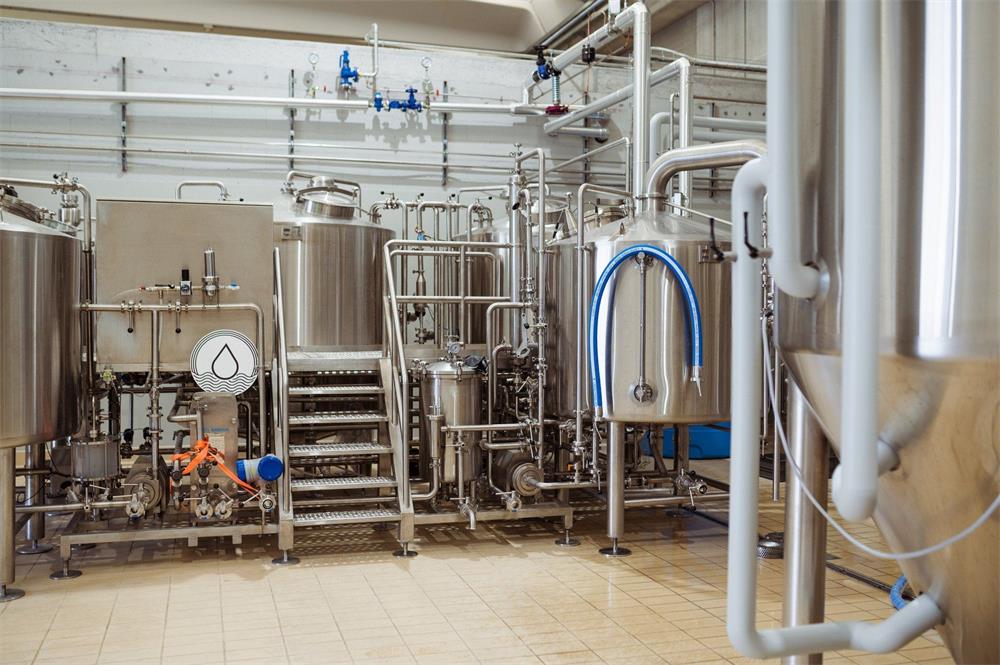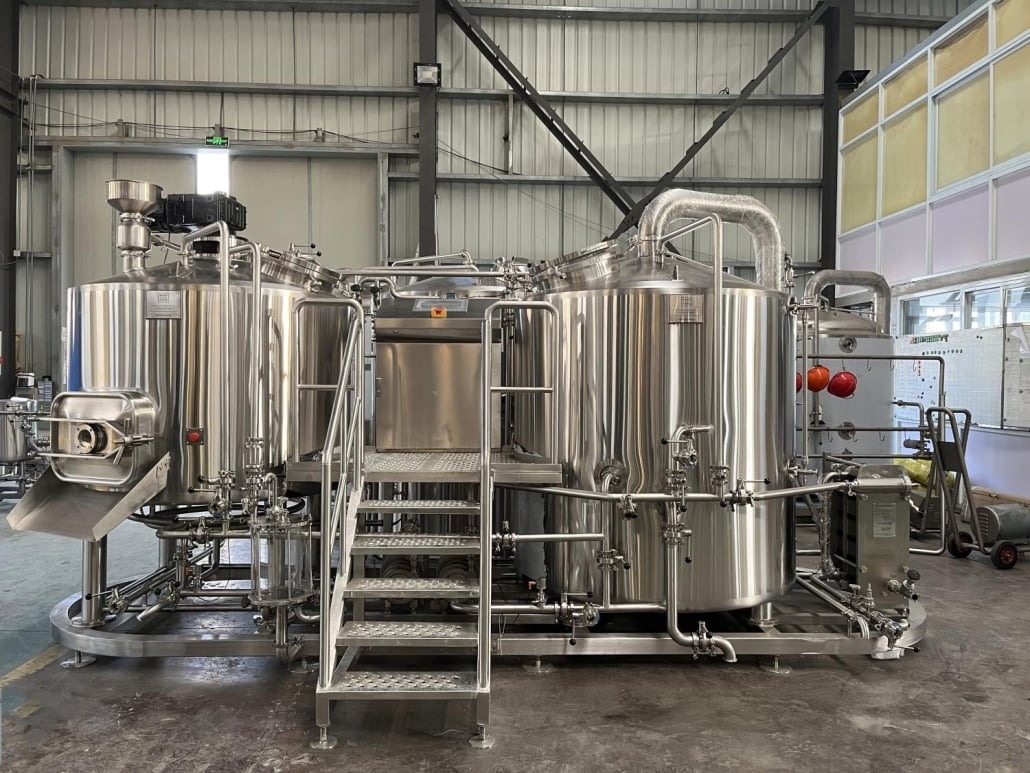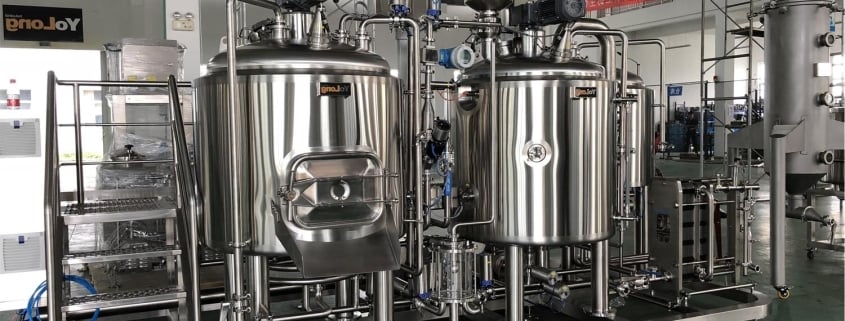Conical Fermentors
Imagine pouring yourself a pint of your homebrew, a masterpiece of clarity and flavor. No more battling stubborn sediment at the bottom of the glass – just pure, unadulterated perfection. This vision becomes reality with a conical fermentor, a game-changing vessel for discerning homebrewers.
What is a Conical Fermentor?
A conical fermentor, also known as a conical tank or uni-tank, is a specialized fermentation vessel shaped like an upside-down cone. This cone-shaped design serves a critical purpose: it allows yeast and other sediment to settle at the pointed bottom, away from your beer. This separation is key to achieving superior clarity and taste in your final product.

Features of Conical Fermentors
- Cone-Shaped Design: The star of the show, the cone efficiently funnels sediment towards the bottom, away from your precious brew.
- Dump Valve: Located at the lowest point of the cone, this valve allows for easy and mess-free removal of yeast and sediment.
- Racking Arm (Optional): This handy tool allows you to effortlessly siphon your beer off the sediment without disturbing it.
- Pressure Capable (Some Models): For those who experiment with styles like lagers or carbonated ales, a pressure-rated conical fermentor allows fermentation and carbonation to occur in the same vessel.
- Temperature Control Capability (Some Models): Jackets or coils can be integrated into the fermentor wall for precise temperature control during fermentation.
Brewing Process with a Conical Fermentor
The brewing process remains fundamentally the same with a conical fermentor. Here’s a simplified overview:
- Wort Preparation: Boil your wort (unfermented beer) with hops and other ingredients according to your chosen recipe.
- Cooling and Transfer: Cool the wort to the appropriate temperature for your yeast strain. Transfer the cooled wort to your sanitized conical fermentor.
- Pitching Yeast: Introduce your chosen yeast strain to the wort, initiating fermentation.
- Fermentation: The magic happens! Yeast consumes the sugars in the wort, producing alcohol and carbon dioxide.
- Settling and Cold Crashing (Optional): After fermentation is complete, allow the yeast and sediment to settle in the cone. Some brewers employ a cold crash by lowering the fermentation temperature further, encouraging even more sediment to drop out.
- Transferring (Racking): Using the dump valve or racking arm, carefully transfer your beer off the sediment into a serving keg or bottling bucket.
- Carbonation (Optional): For carbonated styles, add priming sugar and bottle or keg condition your beer.
- Enjoy! Savor your crystal-clear, delicious homebrew!
Capacity, Considerations and Design
Conical fermentors come in a variety of sizes to suit your brewing needs. Here’s a breakdown to help you choose:
| Capacity | Fermentable Batch Size | Considerations |
|---|---|---|
| Under 5 Gallons | Ideal for small batches or experimentation | Perfect for limited space or small brew sessions |
| 5-10 Gallons | Versatile size for most homebrewers | Great balance between batch size and footprint |
| 10 Gallons and Up | Suitable for high-volume brewing | Requires ample space and strong brewing commitment |
Material:
- Stainless Steel: The industry standard, offering durability, ease of cleaning, and a professional look.
- Plastic: A more affordable option, but may be prone to scratches and harboring odors.
Design:
- Jackets: A double-walled construction allowing for the circulation of coolant or heating water for precise temperature control.
- Insulation: Provides passive temperature control, keeping your fermentation temperature stable.
Cost Considerations
Conical fermentors represent an investment in your brewing setup. Here’s a ballpark range to consider:
| Material | Capacity | Price Range |
|---|---|---|
| Plastic | Under 5 Gallons | $50 – $150 |
| Plastic | 5-10 Gallons | $100 – $250 |
| Stainless Steel | Under 5 Gallons | $200 – $400 |
| Stainless Steel | 5-10 Gallons | $300 – $800 |
| Stainless Steel | 10 Gallons and Up | $800+ |
Installation, Operation, and Maintenance
Conical fermentors are relatively straightforward to set up and use. Here’s a basic guide:
- Assembly: Most conical fermentors require minimal assembly, following the manufacturer’s instructions.
- Sanitization: Sanitizing your fermentor before each use is crucial to prevent contamination. A thorough cleaning with a no-rinse sanitizer is recommended.
- Transferring Wort: Carefully transfer your cooled wort from your kettle to the fermentor.
- Attaching Airlock: Install an airlock to allow CO2 to escape while preventing contamination from entering.
- Temperature Management: Maintain the desired fermentation temperature throughout the process. Some models may require an external temperature control system.
- Monitoring Fermentation: Observe the airlock activity as an indicator of fermentation progress. Take gravity readings (optional) to track sugar conversion.
- Transferring (Racking): After fermentation is complete, use the dump valve or racking arm to transfer your beer to a serving keg or bottling bucket, leaving the sediment behind.
- Cleaning: Disassemble and thoroughly clean your conical fermentor after each use. Pay close attention to areas where sediment can accumulate, like the cone and dump valve.
Choosing the Right Conical Fermentor
Selecting the perfect conical fermentor depends on several factors:
- Brewing Volume: Consider the size of your typical batch size and choose a fermentor that comfortably accommodates it. Remember, leaving some headspace is essential for proper fermentation.
- Budget: Conical fermentors range in price depending on material, size, and features. Determine your budget and prioritize the features most important to you.
- Space Constraints: Measure your available fermentation space and choose a fermentor that fits comfortably. Stainless steel conical fermentors tend to have a larger footprint than plastic models.
- Features: Decide which features are most desirable for your brewing style. Pressure capability and temperature control jackets are valuable additions, but may not be essential for all brewers.
Suppliers and Price Range
Several reputable online and brick-and-mortar retailers offer conical fermentors. Here are some examples to get you started:
| Supplier | Examples | Price Range |
|---|---|---|
| Northern Brewer | Fermzilla Plastic Conical Fermenters, Anvil Stainless Steel Conical Fermentors | $100 – $800+ |
| MoreBeer! | Speidel Stainless Steel Conical Fermenters, Blichmann Engineering Conical Fermentors | $200 – $800+ |
| Austin Homebrew Supply | Anvil Crucible Conical Fermentors, Spike Brewing Conical Fermentors | $300 – $800+ |
Pros and Cons of Conical Fermentors
Pros:
- Superior Clarity: The conical design effectively separates yeast and sediment, resulting in crystal-clear beer.
- Easier Transferring (Racking): The dump valve or racking arm allows for clean and efficient transfer of your beer without disturbing sediment.
- Improved Fermentation Efficiency: The conical design may promote more complete yeast sedimentation, potentially leading to drier and more consistent finished beers.
- Versatility: Some conical fermentors can be used for both fermentation and carbonation, simplifying the brewing process.
- Professional Results: Using a conical fermentor elevates your homebrewing experience and allows you to achieve professional-looking results.
Cons:
- Cost: Conical fermentors are a significant investment compared to traditional carboys or buckets.
- Size and Footprint: They tend to be larger than carboys, requiring more storage space.
- Cleaning: The cone and dump valve require more attention during cleaning to ensure proper sanitation.
- Learning Curve: Operating a conical fermentor may involve a slightly steeper learning curve compared to simpler fermentors.

FAQ
Q: Are conical fermentors necessary for homebrewing?
A: No, conical fermentors are not essential for homebrewing. You can achieve good results using carboys or buckets. However, conical fermentors offer significant advantages in terms of clarity, ease of use, and potential for improved fermentation efficiency.
Q: What size conical fermentor should I get?
A: Choose a fermentor size that accommodates your typical batch size with some headspace for foaming during fermentation. Consider your available space as well.
Q: Do I need a pressure-rated conical fermentor?
A: A pressure-rated conical fermentor is only necessary if you plan to brew styles like lagers or carbonated ales where fermentation and carbonation occur in the same vessel.













